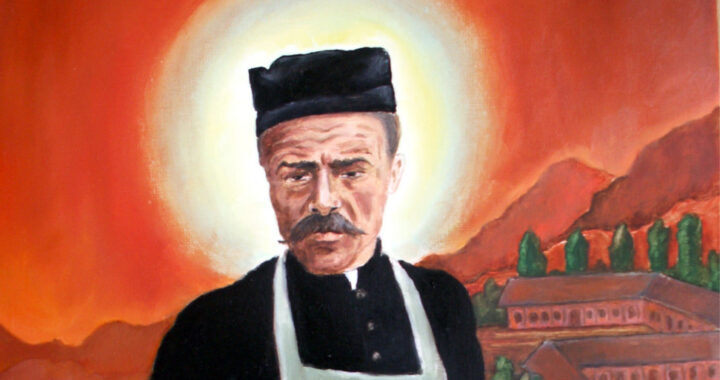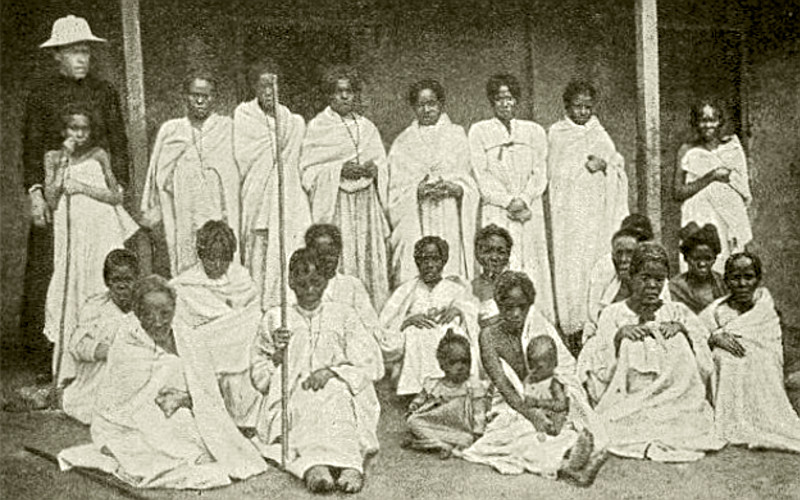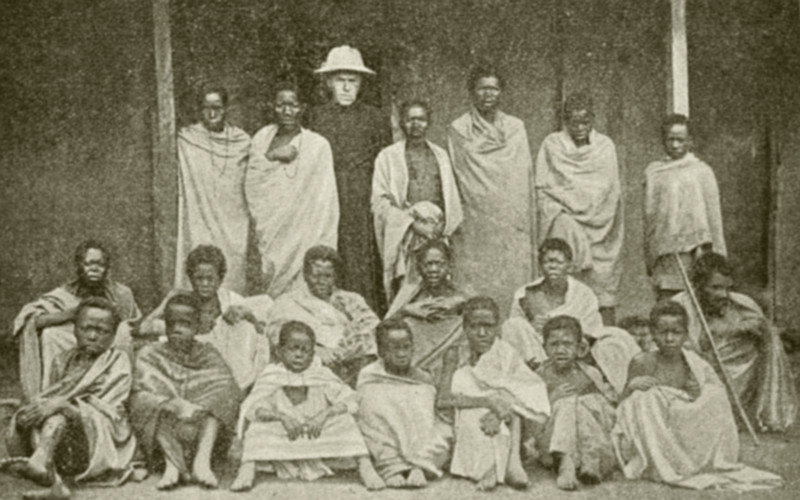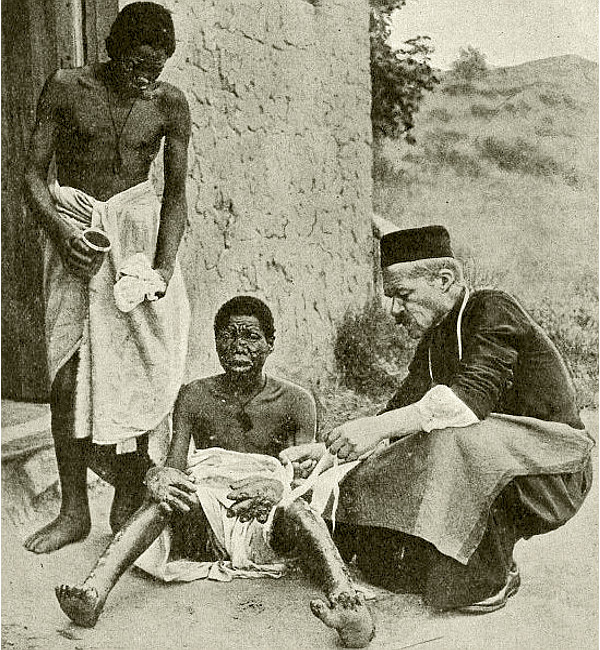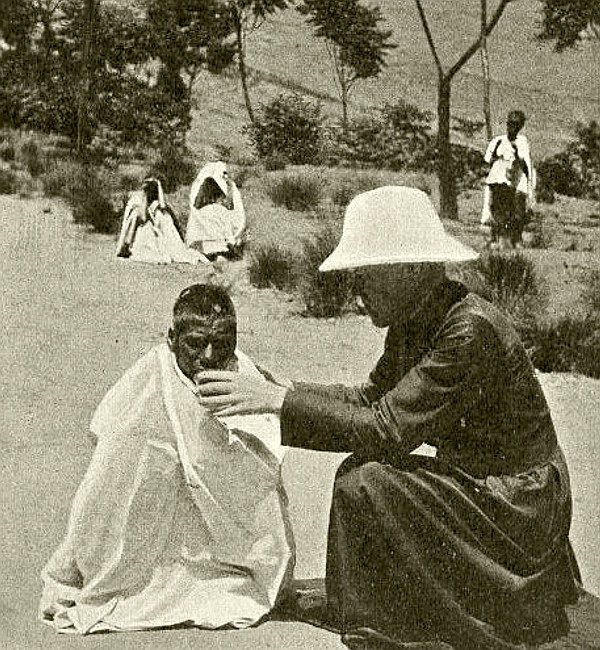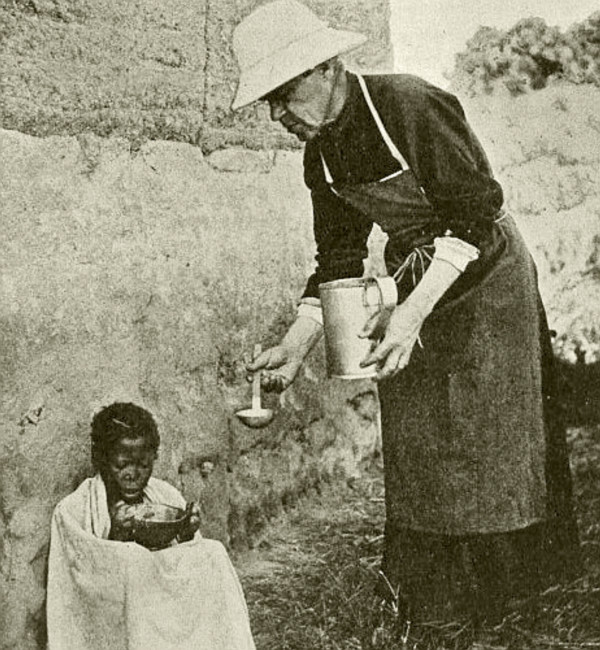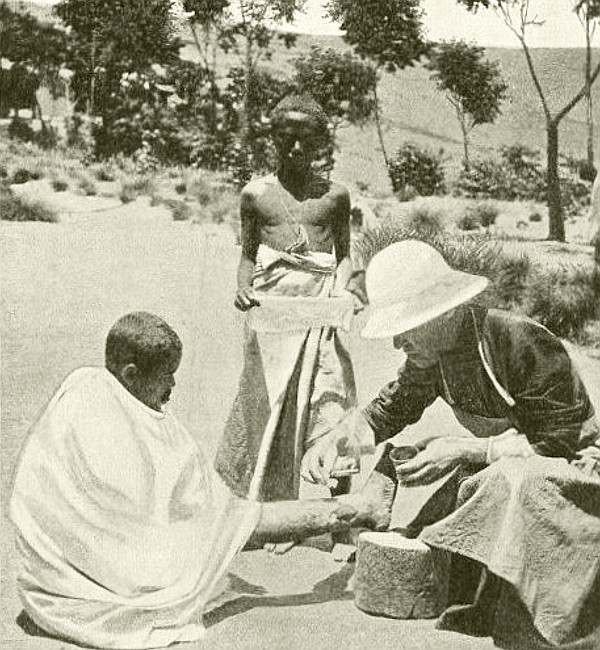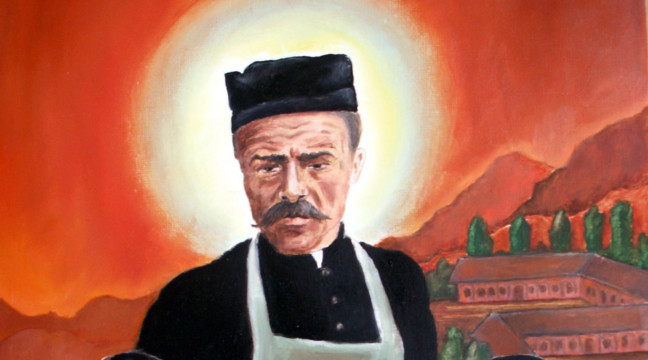One hundred eight years ago, on October 2, 1912, the day of the liturgical commemoration of the St Guardian Angels, Father Jan Beyzym SJ, the man of the greatness of the soul and a generous heart, died in Madagascar. He died in a tiny room of a small house just next to the ” palace”, which he built for his” black birds” – the lepers.
Father Beyzym was the oldest son of Count Jan Beyzym Senior and Countess Olga née Stadnicka. He was born on May 15, 1850 in the family manor of Welyki Beyzymy, Wolyn. Father spent his childhood in Onatskivtsi estate, where he also got home schooling. Then, because of the difficult family situation, there was a few years educational gap. In the years of 1864 – 1871 he studied at the II Governorate High School in Kyiv. After finishing his studies, on the 10th of December 1872, Father joined the Society of Jesus. He was 22 years old. Having had two years of novitiate in Stara Wies and having finished his studies of Humanitarian science, Philosophy and Theology, on the 26th of July 1881 Father was ordained as a priest by Bishop Albin Dunayevski in Krakow St Thomas Church.
However, it took Father Beyzym a while before he recognized his missionary vocation. Just after he was ordained, he worked with the youth. At first, Father Beyzym worked as an educator in Ternopil boarding school. After the final stage of his religious formation, i.e. third probation and having taken the last religious vows, Father worked as a youth worker in Chyriv boarding school. He served as an infirmarian there and also as a teacher of French and Russian, which he knew since his childhood.
THE CALL OF A MISSIONARY
It was in Chyriv, when Father felt the desire to serve the lepers. The root of that decision was multi-threaded. Father Professor Ludwik Grzebień SJ (referring to the words of Father Marian Czerminski SJ) wrote in his book ”Blessed Jan Beyzym. The man and his deeds” that “it was the booklet “Three Years Among the Lepers” by Father Jan Wehinger, which was published in 1897 and got into the hands of Father Apoloniusz Kraupa in Chyriv, became the turning point in Father Beyzym’s life. At that time Father Kraupa had not been ordained yet. Having decided to share his thoughts with Father Beyzym, he went to see Father in his workshop. (It was, undoubtedly, the booklet “Drei Jahre unter den Aussätzigen”, Wien 1895. Ref. L. Grzebień). Setting his chisel aside, Father Beyzym would say firmly:" There are no obstacles for my part. I am ordained and can go to the lepers, if the superiors let me. As for you, why not to make a request for that mission. You may succeed or fail, but it is always worth trying”. Then, they went to the chapel to place their resolutions, made to God, into the hands of His Holy Mother. After that, they went, in turns, to see Father Jackowski, who at that time was in Chyriv with a short visit. Father Jackowski knew Father Beyzym since Father’s first years in the Society of Jesus. He understood his mood at once and approved his plan.
It was the last moment in Father Beyzym’s life, when he could realize his dreams of being a missionary. He was 48 years old and was out of age for other missions. Because of the lack of the candidates, Father could succeed with being sent to the lepers”. (L. Grzebień, Blessed Jan Beyzym. The man and his deeds, Kraków 2002, s. 133–134).
And so it happened. At the age of 48 Father Beyzym took the decision to serve a mission working for the lepers. On the 23rd of October 1897, he wrote to Father Louis Martin, the General of the Society of Jesus:" I know perfectly well what the leprosy is and what I should be prepared for. It does not discourage me though, quite the opposite, I am happy to reward my sins by doing that service”. (Quoted after: Cz. Drążek, Blessed Jan Beyzym SJ, Apostle of Madagascar. Selection of letters, Krakow 2002, p. 10). Father General gave his consent. At first Father Beyzym was to be sent to work in the leprosarium in Mangalore, India, where, because of the lack of the personnel, the new workers were very welcomed. But, considering Father’s age and no command of English, he was finally sent to Toulouse Province, which had the mission in Madagascar. The state language of Madagascar was French. Father Beyzym had a good command of it.
DEPARTURE TO MADAGASCAR
On the 17th of October 1898 Father Beyzym bid farewell to his beloved motherland and headed to France. The same year, on the 10th of November, he sailed from Marcel to Madagascar. He arrived in Tananarive (now Antananarivo), the capital of Madagascar, on the 30th of December.
On his arrival, Father was sent by his superiors to the nearest leprosarium of Ambahivoraka, where about 150 lepers lived in complete isolation. The sick lived in a dilapidated adobe hut divided into tiny cubicles. There were neither doors nor windows there, no furniture, no housekeeping things. There was only a bare mud floor. The place for sleeping on it was the patients’ only possession. The lepers did not get any medication. They were living from day to day without any help and were dying rather from hunger than the illness.
The sight of those poor people, their misery, the wretchedness of their existence and their suffering often made Father cry. He begged Our Good Lord to help those miserable people. Father Beyzym started to work immediately, devoting his strength, his organizational talents, but most of all – his heart to the sick. He started living among them to serve them, take care of them and to preach them good news that God loved them and the everlasting home, where they would be happy someday, was prepared for them in heavens.
Father Beyzym appealed to his charitable compatriots, begging them to support the poor Malagasy lepers living in extreme poverty. He wrote a lot of letters to Father Cherminski, whom he knew from Krakow. The idea of writing letters belonged to Father Cherminski, who “living with Father Beyzym under the same roof for a couple of month, discussed with Father his future activities and ways to obtain the necessary resources for the leprosarium construction. He encouraged Father to write the letters to be published in the “Catholic Missions”, thus, helping to find the necessary benefactors". (L. Grzebień, p. 137).
Father agreed to such a proposal for the sake of the cause. It brought the anticipated result after all. Father’s letters were very popular. They helped him to achieve his intended goal – to build the leprosarium for his sick.
Father Beyzym left Ambahivoraka at the end of September 1902. He travelled 395 km. on foot to the city of Fianarantsoa, where, thanks to the generous donations of his fellow compatriots, he built the leprosarium, which opened its doors for the patients on the 16th of August 1911.
FATHER BEYZYM’S DEATH
The leprosarium designer and constructor became seriously ill shortly after the leprosarium inauguration. Taking care of the sick, Father saw their sufferings and, seeing them, suffered himself. He suffered, because his brothers and sisters, his “black birds”, as he called them, felt so much pain and were unhappy and unfortunate. And then, it happened as if it was Polish Samaritan’s turn to suffer. Father Beyzym fell seriously ill. He experienced almost unbearable pain. It turned out to be the last illness of Father Beyzym. The bedsores that covered his body, made his sufferings even more acute. He would groan throughout the nights, but if asked whether he felt much pain, Father always answered that it was nothing compared to the sufferings of Christ. He was ready to give everything for Christ. His sufferings were trifles that did not even count, “the splints of Our Lord’s Cross, that, because of my nonmortification, seem to hurt me. The misery of my poor patients hurts me the most”, - wrote Father Beyzym in one of his letters”. (Cz. Drążek, p. 21).
Being exhausted by the work beyond his strength, plagued by various diseases, especially malaria, Father Beyzym died. The death did not let him realize his wish to go to Sakhalin to preach among the convicts.
THE LEPERS’ APOSTLE INNER LIFE
Father Beyzym’s SJ inner life was characterized by the deep bond with Christ and the Eucharist. The Holy Mass was the centre of his life. It hurt him that the small chapel nearby his mission did not have even a permanent tabernacle. Water was dripping onto the altar during the Mass in the rainy season. Father was devoted to Mary deeply. He attributed all his successes to Our Holy Mother, considering himself a tool in Her hands. He was a man of action. He was tireless and hardworking, but he also was a man of prayer. In his apostolic life he attributed a significant role to praying, stressing the importance of prayer in reaching the holiness. In the spirit of St Ignatius, Father Beyzym was contemplative in his activities. He struggled with daily hardships, fought thousands of worries and pains, but first of all, he was a man of prayer. The prayer was a source of his strength. Having no time for a silent prayer, he was praying continuously. Father always said that his prayer might not worth much, that he had difficulties with it. That was the reason he asked the Carmelite nuns to pray for him. (Ref.: www.vatican).
Father Jan Beyzym, The Servant of the Lepers, was beatified by Pope John Paul II on Krakow Blonia on August 18, 2002.
Fr Cz. H. Tomaszewski SJ
THE PRAYER FOR THE CANONIZATION
Father of mercy and God of all comfort!
Through the agency of Your Servant Jan Beyzym
You bestowed mercy and consolation
On the most miserable of the miserable,
On the forlorn and outcast,
On the separated off the human society
With the wall of fear and scorn.
By Your mercy in him
And his intercession
Make us the instrument of Your Providence,
Kindness and consolation for all,
Who need it.
And if it is not against Your will,
Deign to include him among Your Saints,
And graciously grant us,
What we sincerely ask You for
With the desire for Your glory
And our benefit.
Through Christ, Our Lord. Amen
